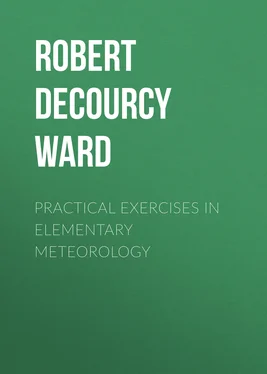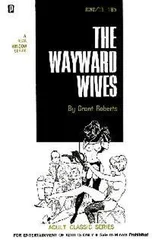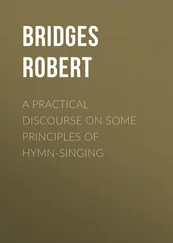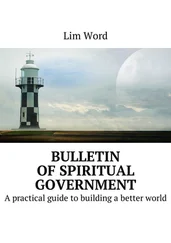Robert DeCourcy Ward - Practical Exercises in Elementary Meteorology
Здесь есть возможность читать онлайн «Robert DeCourcy Ward - Practical Exercises in Elementary Meteorology» — ознакомительный отрывок электронной книги совершенно бесплатно, а после прочтения отрывка купить полную версию. В некоторых случаях можно слушать аудио, скачать через торрент в формате fb2 и присутствует краткое содержание. Жанр: foreign_antique, Физика, foreign_edu, на английском языке. Описание произведения, (предисловие) а так же отзывы посетителей доступны на портале библиотеки ЛибКат.
- Название:Practical Exercises in Elementary Meteorology
- Автор:
- Жанр:
- Год:неизвестен
- ISBN:нет данных
- Рейтинг книги:4 / 5. Голосов: 1
-
Избранное:Добавить в избранное
- Отзывы:
-
Ваша оценка:
- 80
- 1
- 2
- 3
- 4
- 5
Practical Exercises in Elementary Meteorology: краткое содержание, описание и аннотация
Предлагаем к чтению аннотацию, описание, краткое содержание или предисловие (зависит от того, что написал сам автор книги «Practical Exercises in Elementary Meteorology»). Если вы не нашли необходимую информацию о книге — напишите в комментариях, мы постараемся отыскать её.
Practical Exercises in Elementary Meteorology — читать онлайн ознакомительный отрывок
Ниже представлен текст книги, разбитый по страницам. Система сохранения места последней прочитанной страницы, позволяет с удобством читать онлайн бесплатно книгу «Practical Exercises in Elementary Meteorology», без необходимости каждый раз заново искать на чём Вы остановились. Поставьте закладку, и сможете в любой момент перейти на страницу, на которой закончили чтение.
Интервал:
Закладка:
As the tension of the steel spring varies with the temperature, aneroids are usually compensated for temperature by having one of the levers made of two different metals, e.g. , brass and iron, soldered together, or else by leaving a small quantity of air in the vacuum chamber. This air, when heated, expands, and thus tends to compensate for the weaker action of the spring, due to the higher temperature. At best, however, this compensation is but imperfect, and this fact, together with the friction of the different parts, the changes in the spring with age, and the need of frequent adjustments, makes aneroids rather inaccurate. They may be adjusted to mercurial barometers by means of a small screw, whose head may be found on the lower surface of the instrument. The words fair , stormy , etc., which frequently appear on the face of aneroid barometers, are of little use in foretelling weather changes, as no definite pressures always occur with the same weather conditions. The instrument should be tapped lightly a few times with the finger before a reading is made. The second pointer, which is often found in aneroids, is set by the observer on the position marked by the index hand when he makes his reading. The difference between the pressure marked by this set pointer and that shown by the index hand at the next observation is the measure of the change of pressure in the interval.
Another column must now be added to the record book (preferably between the columns devoted to temperature and wind ) to receive the “Pressure in Inches and Hundredths.”
Is the pressure constant ( i.e. , are the readings always the same) or does it vary? If it varies, is there any apparent system in the variations? Is there a tendency to a daily maximum? To a daily minimum? If so, about what time do these occur, respectively? What is the average variation (in inches and hundredths) in the course of a day? What is the greatest difference in pressure which you have observed in a day? What is the least? Does the pressure seem to vary more or less in the colder months than in the warmer? Has the height of the mercury column any relation to the weather? Are we likely to have rainy weather with rising barometer? Is the velocity of the wind related to the pressure in any way? How? Can you make any general rules for weather prediction based on the action of the barometer? What rules?
Tabulation of Observations.—The tables suggested in the preceding chapter can be used unchanged with the simple instruments just described.
Summary of Observations.—At the end of each month summarize your instrumental observations in the following way:—
Temperature. —Add together all your temperature readings; divide their sum by the total number of observations of temperature, and the quotient will give you a sufficiently accurate mean or average temperature for the month in question. It is to be noted that the mean monthly temperatures obtained from these observations will be much more accurate if the thermometer readings are made at 7 A.M. and 7 P.M., at 8 A.M. and 8 P.M., etc., and the mean of these is taken; or if the mean is derived from the maximum and the minimum temperatures, discussed in Chapter III. This mean temperature should be written at the bottom of the temperature column, and marked “Mean.” The mean monthly temperature is one of the important meteorological data in considering the climatic conditions of any place.
Wind. —Determine the frequency of the different wind directions by counting the total number of times the wind has blown from N., NE., E., etc., during the month. The wind which you have observed the greatest number of times is the prevailing wind. It may, of course, happen that two or three directions have been observed an equal number of times. The number of calms should also be recorded.
Rainfall. —The total monthly precipitation is obtained by adding together all the separate amounts of rainfall noted in your record book, and expressing the total, in inches and hundredths, at the bottom of the rainfall column. You now have the means for comparing one month’s rainfall with that of another month, and of seeing how these amounts vary.
Examine carefully also your non-instrumental observations . See whether you can draw any general conclusions as to the greater prevalence of cloud, or of rain or snow, in one month than in another. Did the last month have more high winds than the one before? Or than the average? Were the temperature changes more sudden and marked? Was there more or less precipitation than in previous months?
CHAPTER III.
ADVANCED INSTRUMENTAL OBSERVATIONS
The instruments for more advanced study are the following: maximum and minimum thermometers, wet and dry-bulb thermometers, sling psychrometer, standard barometer, thermograph, barograph, and anemometer .

Fig. 7.
Maximum and minimum thermometersare usually mounted together on a board, as shown in Fig. 7, the lower one of the two being the maximum, and the upper the minimum. In the view of the instrument shelter (Fig. 2), these thermometers are seen on the left. The minimum thermometer, when attached to its support, is either exactly horizontal or else slopes downward somewhat towards the bulb end, as shown in Fig. 7. These instruments, as their names imply, register the highest and the lowest temperatures, respectively, which occur during each day of 24 hours. The maximum thermometer is filled with mercury. Its tube is narrowed just above the bulb, in such a way that the mercury passes through the constriction with some difficulty. As the temperature rises, the mercury, in expanding, is forced out from the bulb through this narrow passage. When the temperature falls, however, the mercury above this point cannot get back into the bulb, there being nothing to force it back. The length of the mercury column, therefore, remains the same as it was when the temperature was highest, and the instrument is read by observing the number of degrees indicated by the top, or right-hand end, of the mercury column upon the scale. After reading, the thermometer is set by removing the brass pin upon which the bulb end rests, and whirling the instrument rapidly around the pin to which its upper end is fastened. By this process the mercury is driven back into the bulb, past the constriction. Care must be taken to stop the thermometer safely while it is whirling. After setting, the reading of the maximum thermometer should agree closely with that of the ordinary or dry-bulb thermometer.
The minimum thermometer is filled with alcohol, and contains within its tube a small black object, called the index , which resembles a double-headed black pin. The instrument is so constructed that this index, when placed with its upper, or right-hand end, at the surface of the alcohol, is left behind, within the alcohol, when the temperature rises. On the other hand, when the temperature falls, the index is drawn towards the bulb by the surface cohesion of the alcohol, the top or right end of the index thus marking the lowest temperature reached. The upper end of the thermometer is firmly fastened, by means of a screw, to a brass support, while the lower end rests upon a notched arm. In setting this instrument, the bulb end is raised until the index slides along the tube to the end of the alcohol column. The thermometer is then carefully lowered back into the notch just referred to. Maximum and minimum thermometers need to be read only once a day, in the evening. The temperatures then recorded are the highest and lowest reached during the preceding 24 hours. The observation hour is preferably 8 P.M., but if this is inconvenient, or impracticable, the reading may be made earlier in the afternoon. The hour, however, should be as late as possible, and should not be varied from day to day. The maximum temperature sometimes occurs in the night. The maximum and the minimum temperatures should be entered every day, in a column headed “Maximum and Minimum Temperatures,” in your record book.
Читать дальшеИнтервал:
Закладка:
Похожие книги на «Practical Exercises in Elementary Meteorology»
Представляем Вашему вниманию похожие книги на «Practical Exercises in Elementary Meteorology» списком для выбора. Мы отобрали схожую по названию и смыслу литературу в надежде предоставить читателям больше вариантов отыскать новые, интересные, ещё непрочитанные произведения.
Обсуждение, отзывы о книге «Practical Exercises in Elementary Meteorology» и просто собственные мнения читателей. Оставьте ваши комментарии, напишите, что Вы думаете о произведении, его смысле или главных героях. Укажите что конкретно понравилось, а что нет, и почему Вы так считаете.












